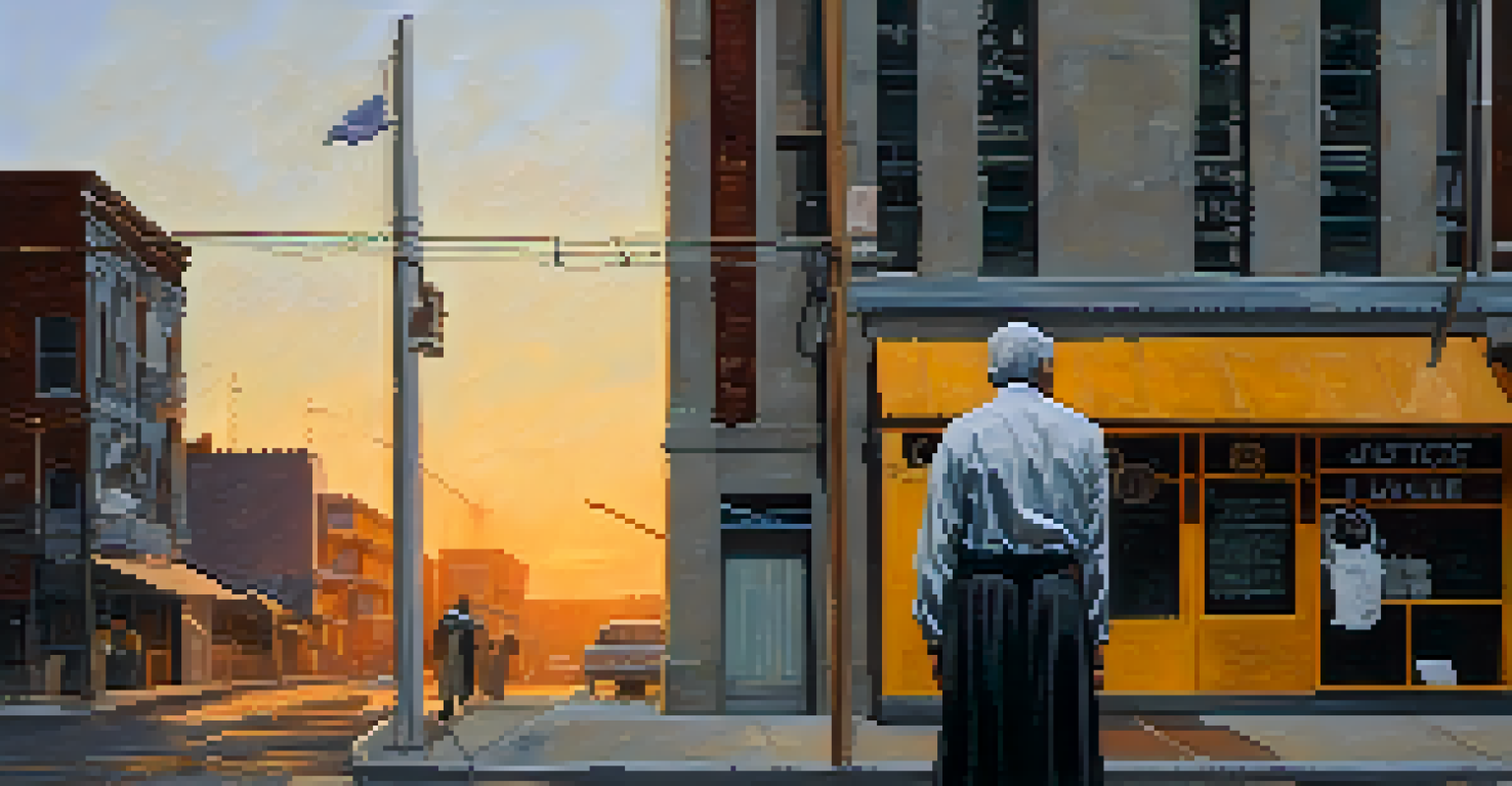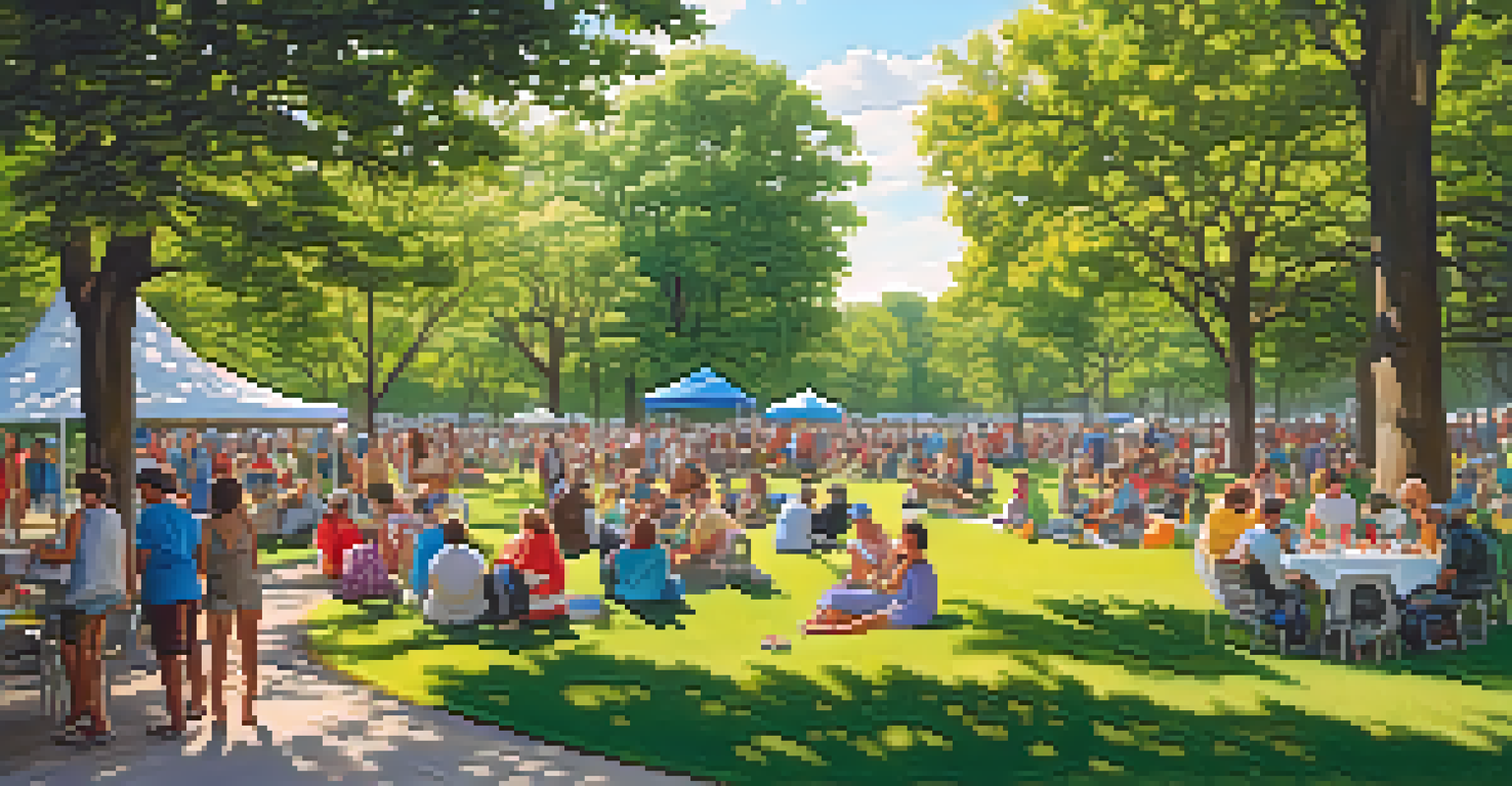The Impact of Social Realism on Political Art Movements

Understanding Social Realism: A Brief Overview
Social realism is an art movement that emerged in the early 20th century, focusing on the everyday lives of working-class individuals. It aimed to highlight social issues and injustices, often depicting the struggles of ordinary people. This movement sought to give a voice to the voiceless and encourage societal change through art.
Art is not a mirror to hold up to society, but a hammer with which to shape it.
Artists like Diego Rivera and Ben Shahn were pivotal in this movement, using their work to comment on economic disparities and political turmoil. Their art wasn't just for aesthetic appreciation; it served as a powerful tool for advocacy and education. By portraying real-life situations, social realism helped to raise awareness and inspire action among viewers.
As we delve deeper into the connection between social realism and political art movements, we can see how this foundation laid the groundwork for various artistic expressions that followed. Understanding these roots is crucial to appreciate the impact of social realism on contemporary political art.
Historical Context: The Rise of Social Realism
Social realism gained momentum during the Great Depression, a time when economic hardship plagued many. Artists reacted to the dire conditions by creating works that depicted labor struggles and social injustices, which resonated with the public's experiences. This historical backdrop made social realism not just an art movement, but a reflection of the times.

The movement was also influenced by political ideologies, particularly Marxism, which emphasized the importance of class struggle. Artists used their work to critique capitalism and advocate for socialism, ensuring their messages reached a broad audience. Through murals, paintings, and prints, they captured the essence of societal issues, making them accessible to the masses.
Social Realism and Advocacy
Social realism emerged as an art movement that aimed to highlight social issues and injustices, giving a voice to the working class.
Understanding this historical context helps us appreciate how social realism became a catalyst for political art movements. It set the stage for artists to challenge societal norms and advocate for change, establishing a legacy that continues to thrive today.
Key Artists Who Shaped Social Realism
Several influential artists played a crucial role in shaping the social realism movement. Diego Rivera, for instance, is renowned for his vibrant murals that celebrated Mexican culture while addressing themes of labor and social justice. His work often depicted the struggles of the working class, making him a prominent figure in the movement.
The role of the artist is to make the revolution irresistible.
Another key player was Ben Shahn, whose artwork focused on the plight of the underprivileged in America. He effectively used photography and painting to document social issues, urging viewers to confront uncomfortable truths. Shahn's ability to weave narrative into his art made a significant impact on how political messages were conveyed.
These artists not only contributed to the visual language of social realism but also inspired future generations of political artists. Their legacies remind us that art can be a profound vehicle for social change, setting the groundwork for subsequent movements that would carry the torch forward.
The Transition to Contemporary Political Art Movements
As social realism evolved, it laid the groundwork for contemporary political art movements such as activist art and street art. These newer forms of expression often incorporate the themes and techniques of social realism while adapting to the modern context. Artists today continue to tackle social issues, using their work to spark conversations and inspire action.
For instance, the rise of street art has brought political messages to urban landscapes, making them accessible to a broader audience. Artists like Banksy have skillfully blended humor and critique to highlight social injustices, demonstrating that the spirit of social realism is alive and well in today's art scene. This evolution reflects a shift in how political art engages with the public.
Global Influence of Social Realism
The principles of social realism have inspired political art movements worldwide, adapting to various cultural contexts and addressing shared struggles.
The transition from social realism to contemporary movements illustrates the enduring relevance of these themes in art. By building on the foundations laid by earlier artists, today's creators continue to challenge societal norms and advocate for change, showcasing the power of art in the political arena.
The Role of Technology in Political Art Today
In the digital age, technology has transformed how political art is created and disseminated. Artists now have access to various platforms, enabling them to reach wider audiences than ever before. Social media, in particular, has become a powerful tool for sharing political messages, facilitating discussions, and mobilizing support for causes.
For example, hashtags like #BlackLivesMatter have not only raised awareness but also inspired a wave of digital art that addresses racial injustice. Artists leverage this technology to create impactful visuals that resonate with viewers, often going viral and sparking important conversations. This democratization of art allows diverse voices to be heard in the political landscape.
The integration of technology into political art serves as a bridge between social realism and modern expressions. It emphasizes the ongoing need for art to reflect and respond to societal issues, proving that the essence of social realism remains vital in today's digital world.
Social Realism's Influence on Global Political Art
Social realism's impact is not confined to a single region; it has influenced political art movements across the globe. Artists worldwide have drawn inspiration from the principles of social realism, adapting them to their unique cultural contexts. This global perspective enriches the dialogue around social issues, highlighting shared struggles and triumphs.
In Latin America, for instance, artists continue to embrace social realism's themes, addressing issues such as poverty and human rights. Similarly, in Europe and Asia, contemporary artists reference social realist techniques to critique political systems and advocate for social justice. This interconnectedness demonstrates the universal relevance of social realism.
Future of Political Art
The future of political art will continue to be shaped by social realism, as artists innovate and engage diverse audiences to advocate for change.
By examining how social realism has shaped global political art movements, we can appreciate the movement's lasting legacy. It serves as a reminder that art can transcend borders, uniting people in their pursuit of justice and equality.
The Future of Political Art and Social Realism
Looking ahead, the future of political art is likely to be shaped by the enduring influence of social realism. As societal issues evolve, artists will continue to adapt their messages and techniques, ensuring that art remains a powerful tool for advocacy. The challenge will be to maintain authenticity while engaging with increasingly diverse audiences.
Emerging artists are already experimenting with new media and interactive art forms, blending traditional social realist themes with innovative approaches. This fusion not only captures the attention of younger generations but also invites them to participate in the conversation around social issues. The potential for collaboration and cross-disciplinary work is vast.

Ultimately, the future of political art rests on the foundation laid by social realism. As artists continue to challenge the status quo and raise awareness, they will carry forward the legacy of social realism, proving that art remains a vital force for change in society.